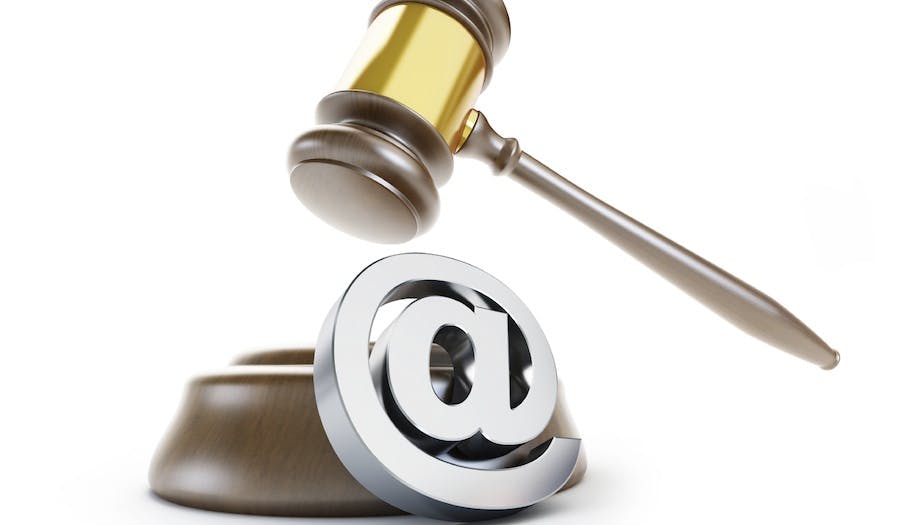Legal ramifications associated with emailed correspondence are often overlooked, but the growing instances in which emails are relevant to legal disputes suggest we should be paying more attention.
Continuing on from Part One, in which we learned that an agreement made via email could be valid and legally enforceable – if a contract’s key elements are included, I’ll be looking at whether not a legal disclaimer at the bottom of the email provides any sort of protection, including an overview of past cases.
We see those disclaimers all the time nowadays, emailed correspondence wearing terms and conditions like a golden shield. But does it cover you? And most importantly, what should it include in order for it to do so?
Brendan Tomlinson, Special Counsel, Technology and Intellectual Property at Ash Street, told me that protection afforded by a legal disclaimer usually depends on the terms of the disclaimer and the circumstances in which it is used.
There are 6 legal concerns often dealt with in a disclaimer: confidentiality, employer liability, contractual rights, viruses, legal/regulatory compliance and marketing.
According to Brendan, an appropriately worded disclaimer may:
- Put the recipient on notice of the confidential nature of the email – and related to that, attempt to maintain the confidentiality of the communication if it is sent to the wrong recipient in error, asking in that situation for the recipient to let you know and delete the email;
- Reduce the risk of employer liability for employee-unsanctioned use of company resources;
- Put the recipient on notice that they may be entering into a legally binding contract by email (where this is relevant);
- Warn the recipient about the possibility of the email or any attachments containing a virus and state that they open any such attachments at their own risk;
- Comply with your industry’s requirements. For example, some educational institutions must include certain information in their emails when corresponding and marketing to overseas students; lawyers will usually include a notice regarding legal professional privilege. In the US, the healthcare and financial services sector have specific disclaimer requirements;
- Ensure compliance with the Spam Act. For example, commercial electronic messages must include information about the individual or company who authorised the sending of the message, and include a functional ‘unsubscribe’ facility.
Australian courts are yet to fully determine the effectiveness of email disclaimers, so it will ultimately come down to the particular facts and circumstances of each case. Still, there are some decisions in international courts that could provide some useful guidance.
Kelly Marshall, Associate, Technology and Intellectual Property, also at Ash Street, provided me with some key examples. She ensured I take note that, as examples, these were persuasive rather than binding.
- In the case of Baillie Estates Limited v Du Pont (UK) Limited [2009] CSOH 95, it was found that an email disclaimer stating that a document attached would not amount to a contract could in fact be overridden by statements and commitments made by parties in the email itself.
- An email disclaimer was effective in the British Columbian case of Langley (Township) v Witschel 2015 BCSC 123, because the disclaimer was held not to be ‘automatic’ or ‘inappropriate’, which would ordinarily result in the disclaimer being meaningless. In this case, the test was whether, in light of the email itself and other correspondence, the “overall impression left on a reasonable person may well be that the disclaimer language is to be ignored in favour of the substantive message”.
- Using similar reasoning, the European Union Technical Board found that an email in Phillips [2012] EPOR 41 was not confidential despite a disclaimer, because the disclaimer was automatic.
There are, of course, a variety of things to be aware of when talking business with customers, partners and associates via email. Ultimately, there are two things you should constantly keep in mind.
- Be sure you do not inadvertently create a contract via email (check back on Part One for more). To help ensure contracts are not made when you did not intend it, clearly state your intentions.
- Emphasise the confidentiality of your correspondence and include a carefully worded disclaimer. If you are at all unsure about what you may be covering in this disclaimer, contact a lawyer with the relevant experience. Most importantly, word all your correspondence carefully. Read everything twice if you have to, and do not rely on an automatic disclaimer to cover you at all times.
————–
About the Author:
Colin Porter is the publisher of Dynamic Business and the founder and MD of credit reporting bureau, CreditorWatch. He has over 20 years experience as a business owner, specialising in general small/medium business issues, cashflow, credit management and online business. Follow CreditorWatch on Facebook, Twitter and LinkedIn.

